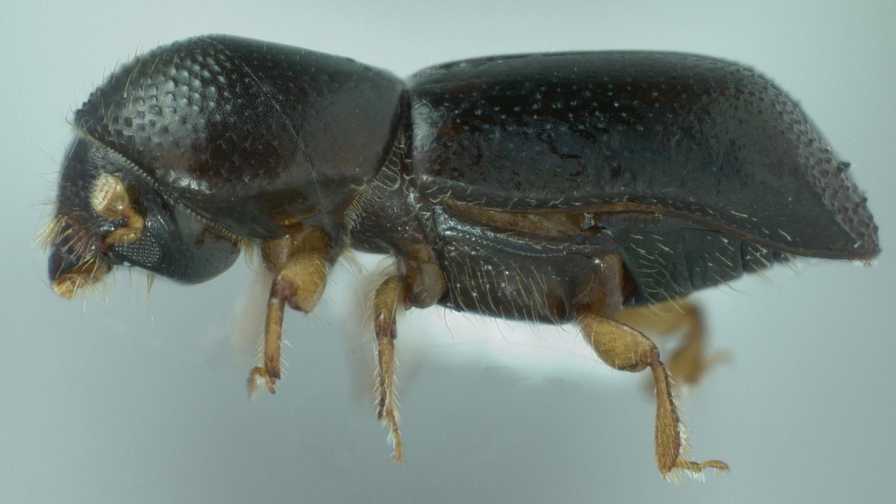How To Build A Better Beetle Trap

The redbay ambrosia beetle is the vector for laurel wilt disease, a malady responsible for killing 12,000 avocado trees in Florida.
Photo by Michael C. Thomas
The Royal Entomological Society has awarded its 2016 Best Paper Award to a piece written by UF/IFAS researchers based on a study about a new way to monitor and trap the redbay ambrosia beetle, a pest that transmits a dangerous pathogen to certain trees.
Redbay ambrosia beetles bore holes into trees and infect them with the fungus Raffaelea lauricola, which causes the potentially deadly disease called laurel wilt. Laurel wilt has destroyed 12,000 commercial avocado trees in Florida.
Lukasz Stelinski, an Associate Professor of Entomology at the UF/IFAS Citrus Research and Education Center, spearheaded the study in which investigators came up with a synthetic aroma to lure redbay ambrosia beetles into traps.
When the beetle infects a tree with the fungus, it farms the fungus and uses it as a food source, Stelinski said. But the fungus emits specific odors, as does the tree itself. Ambrosia beetles use those odors to find the trees they want to bore into, Stelinski said.
Instead of relying on the tree’s odors alone, Stelinksi and his colleagues combined the fungus’ smell with a chemical that simulated the tree’s odor in order to attract the ambrosia beetles into traps. They tested their lure in redbay forests infested with the beetles in Florida.
“When we combined the two as a smell to attract the beetles, we found this combination attracted beetles in a synergistic way,” he said. In other words, the odor increased the number of beetles captured compared to the number captured by just the tree odor. “What we did was identify the blend of chemicals that fungi release. We can use a synthetic blend of these chemicals, like a perfume to mimic what the fungus smells like.”
The paper by Stelinski and six UF/IFAS colleagues was originally published in 2014 in the journal Agricultural and Forest Entomology.









